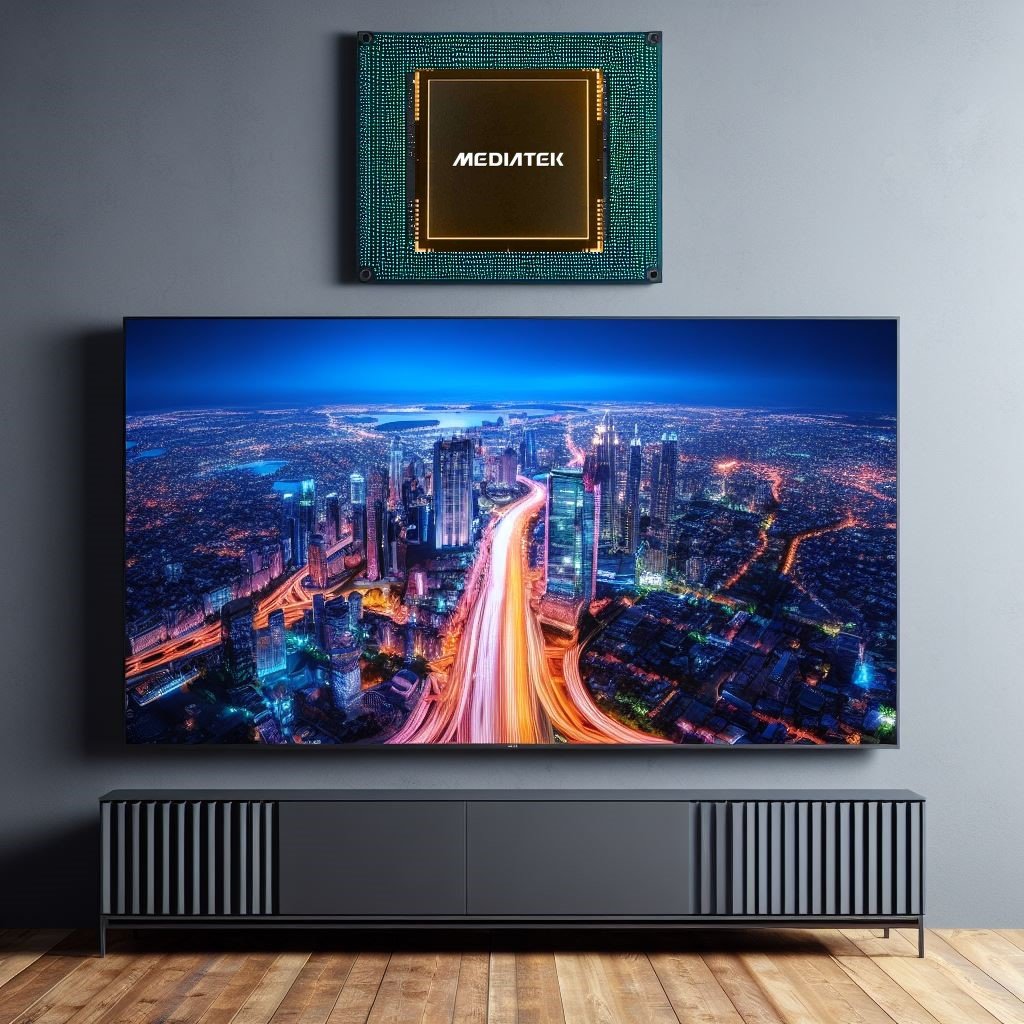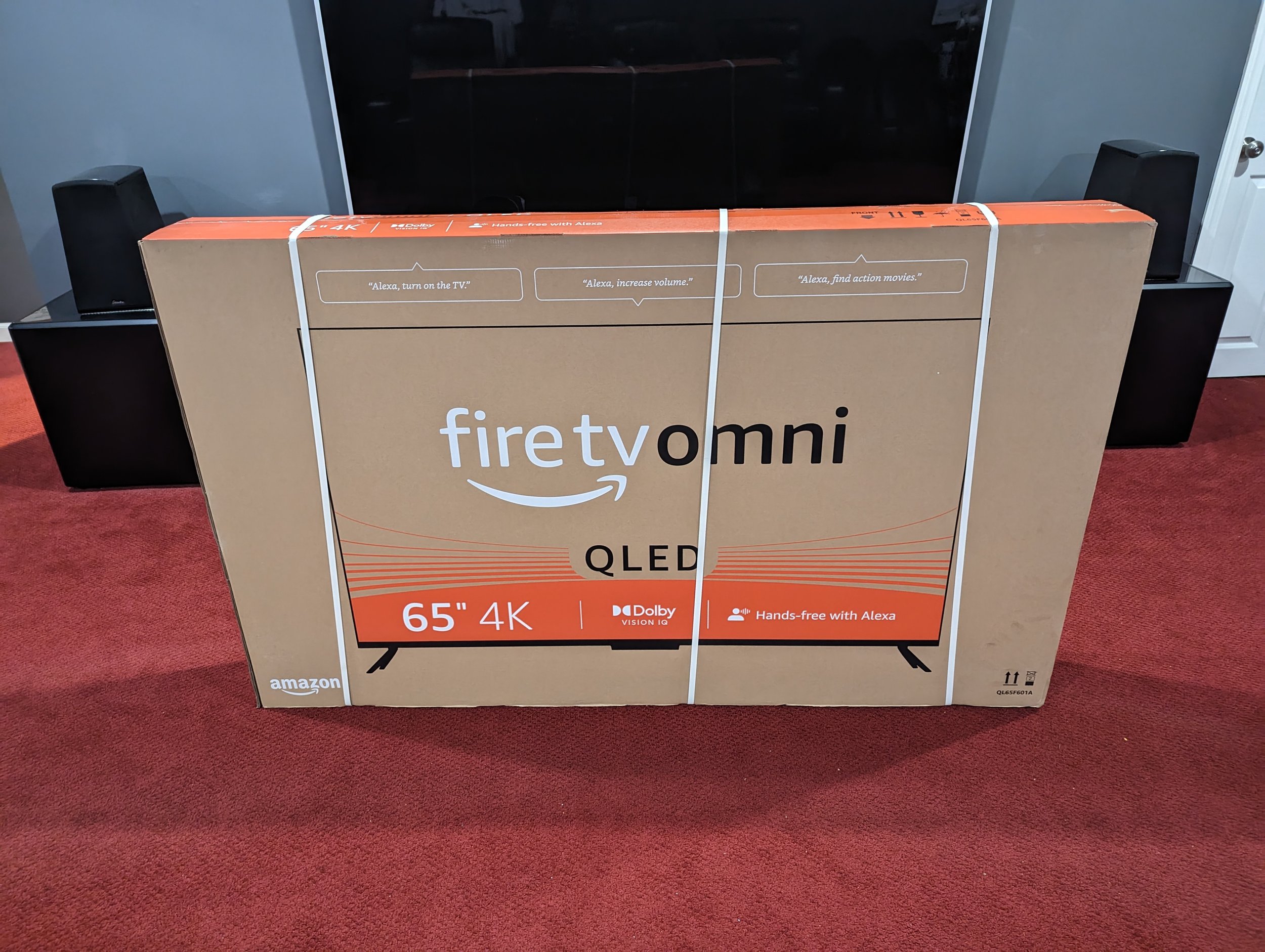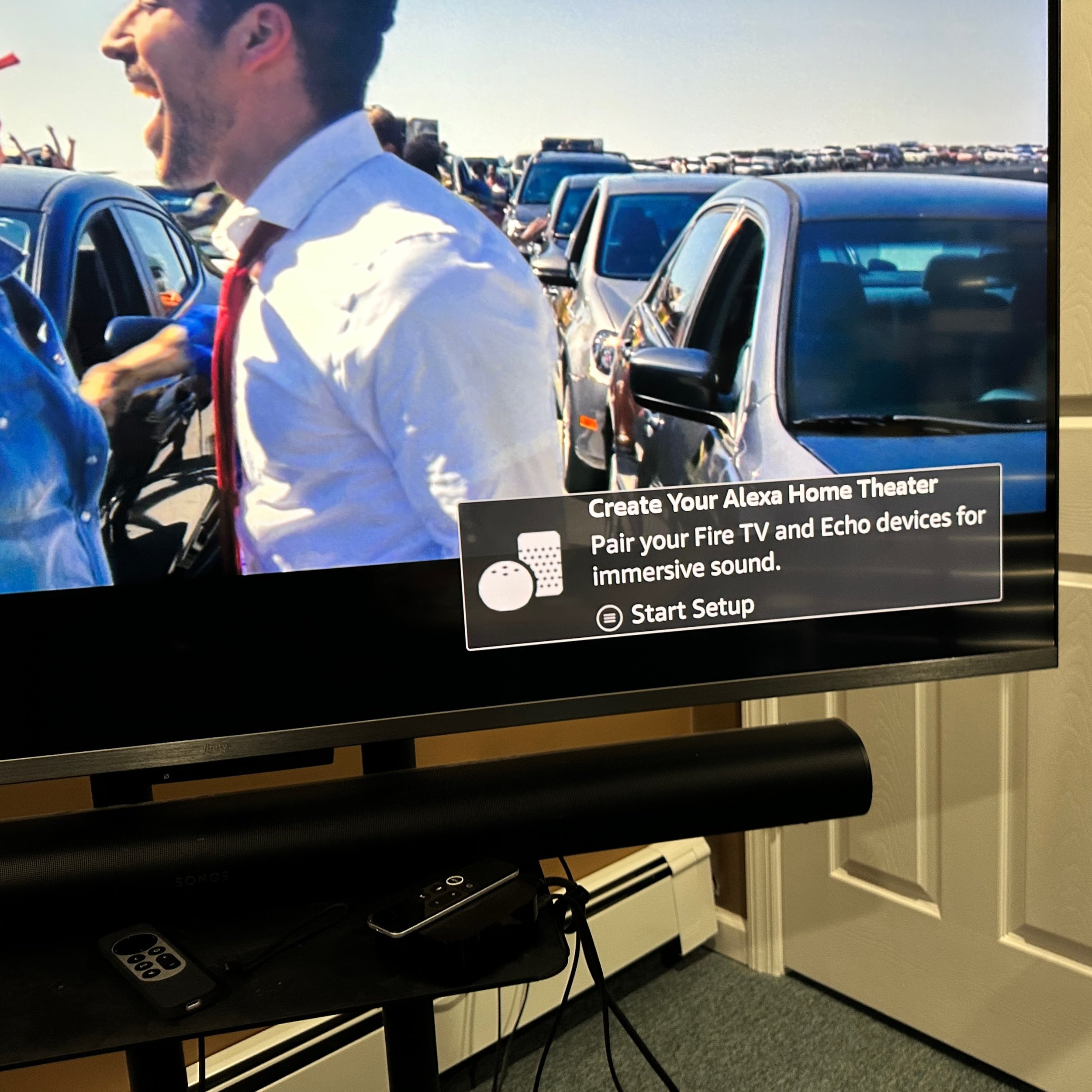MediaTek Drives Innovation in the Digital Living Room — from Amazon to XGIMI
MediaTek has a commanding share of the processors that go into televisions and streaming media devices, and this has led to innovative features and entirely new product categories, as evidenced by two products I’ve been testing from Amazon and XGIMI.
Introduction
MediaTek held its annual Executive Summit just over a week ago, with updates on its partnership with Nvidia for automotive, details on its new flagship Dimensity 9300 smartphone platform, and business opportunities in six different areas. One unexpected highlight is the robustness of MediaTek’s ASIC semi-custom business, where vendors as diverse as Amazon and Juniper Networks co-design processors with MediaTek. This lets companies work with MediaTek’s engineering and packaging expertise and gain access to TSMC’s latest processor nodes. Meta is MediaTek’s latest ASIC design win for upcoming AR glasses. That is the second high-profile public MediaTek ASIC client in XR – last year at this event Sony announced that the PSVR controllers are powered by MediaTek.
My coverage of MediaTek Executive Summit can be found here:
Day 1 X (Twitter) / Threads
Day 2 X (Twitter) / Threads
One of the areas where MediaTek is dominant that wasn’t discussed much at the Summit is the digital living room. The vast majority of smart televisions and streaming media devices are powered by MediaTek processors. This would seem to be a fairly sleepy market: sales are down post-pandemic, and televisions are certainly a mature category. However, MediaTek’s silicon is driving new capabilities and creating new entertainment device categories.
Technological disruption is often portrayed as coming fully-formed from an all-new thing that is superior to established options, but that’s not always how innovations work. Many disruptions come from products that provide lesser experiences at lower price points or appeal to a different set of customer needs than the industry standard. These products then improve over time and eventually hit a tipping point where their advantages overtake the status quo. There is often a key hardware development that enables products to offer new features, hit new price points, or fit into new form factors. We are now seeing smart personal projectors move up into the enthusiast space, and ambient modes for TVs move from extremely expensive purpose-built devices to inexpensive TVs and streaming media sticks. The tech making these shifts possible is an abundance of processing power in the MediaTek silicon that manages the video, audio, computing, and connectivity.
Smart Projectors Move Upmarket
Fitting millions of tiny mirrors on a piece of silicon sounds like science fiction, but Texas Instruments introduced DLP all the way back in 1987. It has been a mature technology since the days of the Intel 286, and it has been used in business and home theater projectors since the 1990’s. Over the past decade or so, companies like Anker’s Nebula have taken commodity DLP chips and put them in soda can-sized containers containing a battery, LED lamp, speaker, and a MediaTek processor with Wi-Fi. By adding Android TV and keystone software, this becomes a self-contained streaming media projection system. You can turn it on, point it at a wall (the keystone software automatically adjusts the image angle, no adjustments necessary), and start watching. Image quality and brightness are usually just adequate, but the portability and convenience make cannister projectors the perfect solution for taking on vacation or getting a big picture without requiring dedicated wall space. They can be cheap, too, with most units selling for $400 - $600, no installation, and usually no dedicated screen – though YouTube van lifers and apartment dwellers often graduate from hanging a sheet to adding an inexpensive pull-down screen.
XGIMI is one of the cannister projector pioneers, and the Chinese company has now sold over five million units. However, it is starting to move decidedly upmarket and its latest product threatening to displace enthusiast home theater projector brands. XGIMI (pronounced “ex-jimmy;” we asked) started with relatively dim, smart portable pico-projectors, but it now offers higher brightness UST (Ultra Short Throw) projectors and 4K HDR projectors using laser light engines. The XGIMI Horizon Ultra I've had in for review is unique: it takes most of the elements of portable smart projectors designed for quick and casual use, then adds serious image quality that should appeal to home theater enthusiasts. In fact, the Horizon Ultra is the first long-throw projector of any kind with Dolby Vision.
The Horizon Ultra runs on the MediaTek MT9629, which is certainly a capable processor, as it supports 4K and HDR, but it is far from MediaTek’s top of the line Pentonic series. By pairing the MT9629 with a 4K DLP chip and a home-grown hybrid LED/laser light engine, the $1799 Horizon Ultra is able to outperform home theater projectors that cost $6000 in some key measures – specifically, HDR.
The Horizon Ultra’s light output requires a lot of power, so the unit does not have a battery and must be plugged into the wall. It is also larger and more of a cube than its cannister predecessors, though it weighs just 11.5 lbs. and is still small enough to tuck in a closet when not in use. Despite the power, the Horizon Ultra merely gets warm during use and is almost dead silent even from two feet away.
The Horizon Ultra is spec'd at 2200 lumen, which is bright enough for casual viewing and sports with the lights on. For serious movie and prestige TV watching, you're still going to want full light control to get the best image. In the cinema mode and in Dolby Vision colors pop without oversaturation. To get HDR, XGIMI uses a dual laser and LED light engine, and it works! In scenes like Wonder Woman crossing no man's land, the sparks of bullets off Diana's shield are markedly brighter than the rest of the image, and her lasso is obviously enhanced, too. Watching Foundations on Apple TV -- which has a "lets apply Dolby Vision to everything" mode -- was a treat. Wide color gamut and high dynamic range scenes abound. Black levels and projector placement -- more on that later -- are the Horizon Ultra's main weaknesses. My eight-year-old Sony 1080p LCOS puts out a markedly softer image (as expected) but slightly better black levels. The XGIMI blows it away on modern benchmarks like HDR and color range.
The unit’s built-in Harmon-branded speaker doesn't provide any spacial effects but does play relatively loud and clean. However, people cross-shopping the Horizon Ultra with other home theater projectors will use one of the two HDMI 2.1 inputs instead with their soundbar or A/V receiver.
There are some compromises in the design. Like many 4K projectors aimed at the consumer market, the DLP engine that XGIMI is using is not true native 4K - it uses pixel shifting to get there -- but it sure looks like 4K when the image is properly dialed in. About that: on most home theater projectors, the distance, height, and left/right position of the mount are precisely calibrated to match the screen size by an installer or the DIY enthusiast. Cannister projectors turn this deficit into a feature by including aggressive keystone correction and dropping picture quality in favor of convenience. The Horizon Ultra tries to split the difference, mostly unsuccessfully. It has the same set-it-and-forget-it keystoning feature as its smaller predecessors, but using it robs the projector of resolution. Enthusiasts would prefer to adjust the projector physically and not lose pixels, but that can be difficult with the Horizon Ultra. It has a single tripod-style thread underneath that did not seem strong enough for ceiling mounting and it lacks any other standard mounting points. There is an optical zoom lens for distance (settings are buried in the menu) but no ability to tilt and no lens shift. The optional stand does add modest tilt angles, but it did not extend up high enough to use behind my seating position. I ended up having to use the keystone feature and adjust the image manually to fit my screen. This is an obvious area for improvement going forward. XGIMI also needs to add lighting to the remote.
Smart TVs Get Smarter (and Cheaper)
At CES 2017, Samsung introduced a line of lifestyle televisions designed to blend better with the décor. The Frame cost hundreds of dollars more than a typical Samsung TV but it had a matte finish, a motion sensor, and a library of fine art and photographs so that it appeared to be a picture frame when not in active use as a television. The Frame was an immediate hit, and future versions added additional sizes and a light sensor, while retaining their premium pricing.
In 2022, Amazon introduced its own TV with an ambient display mode, the Fire TV Omni QLED (Samsung definitely has the better naming system). The Fire TV Omni QLED lacks the matte finish and light sensor that make The Frame physically appear to be framed artwork on the wall, but it costs a fraction of the Samsung’s price. The processor behind this budget lifestyle TV is MediaTek’s MT9020. Like the XGIMI projector above, Amazon is not using MediaTek’s premium Pentonic chipset, just a “good enough” engine that supports 4K, Dolby Vision IQ, and up to 96 local dimming zones. However, the MediaTek silicon still has enough power left over for smart experiences, and Amazon just add art and photo display options: the Fire TV Omni QLED is actually more of a gigantic Amazon Echo Show than a Samsung Frame clone. The Fire TV Omni QLED has always-listening Alexa voice control, a series of widgets, and all the smart home integration of a 10” Echo Show without a touchscreen. If an Amazon package is on its way, a notification can pop up on your TV. Ask Alexa for the weather, and you’ll get a 7 day forecast that takes over the bottom third of your screen. When someone rings your Ring doorbell, their image can automatically show up on screen and you can use the TV’s microphone to tell them not to interrupt your TV time.
The MT9020 is also used in Fire TVs from Xiaomi and HiSense that don’t have ambient mode, and similar MediaTek chips power the majority of 4K TVs on the market. MediaTek offers so much computing capability on today’s smart TVs that the only thing holding back most TVs from offering more capabilities is software. Proving the point, Amazon recently added its ambient experience to the Fire TV Stick 4K Max – a $60 streaming media stick. The Fire TV Stick 4K Max uses an even less-capable MediaTek processor, the MT8696T, as it is only needs to handle the computing and streaming needs, and not also control the TV display and audio hardware directly.
Amazon’s Fire TV lineup has been a showcase for its OS and content since it launched in 2021, but Amazon was clearly aiming for volume sales, and targeted entry level sizes and display technology. In late 2022, Amazon moved a bit farther upmarket with the Fire TV Omni QLED. The new series added quantum dots for better color, full array local dimming for better contrast and black levels, and a larger 75” option. In late 2022, these were somewhat premium features; while TCL and HiSense undercut the $799 65” / $1099 75” Fire TV Omni QLED on price, Amazon’s new sets stood out with their ambience mode and smart display functionality. On sale for the 2023 holidays, Amazon is much more competitively priced: $589 for 65”, $879 for 75”. The best value is the 55” set, at $439.
I have been testing a 65” Fire TV Omni QLED for several months. The initial setup prompts for an Amazon account, which shouldn’t be a surprise; you probably shouldn't be buying a Fire TV if you aren't going to use Amazon services. If you have other Fire TV devices you can restore settings from them and skip a few steps. You can opt into leaving the mic on even when the TV screen is off – this is essentially a very large, very flat Echo speaker. This is opt in, and Amazon not only flags this during setup, but makes it clear where the mic mute switch is for privacy. You can also use Alexa to navigate on-screen menus and choose content; this is never 100% foolproof, but I found the implementation on the latest Fire TV Cube better. Alexa correctly understood commands and wording more often on the Cube; I suspect that it simply has more microphones in its array.
There is an introduction to the Ambient Experience during setup, but it defaults to being off, and you’ll need to figure out how to turn it on later. Actually using the widgets and Ambient Experience ranges can be underwhelming or even frustrating. There are only a handful of widgets, and they aren’t terribly sophisticated. There are a lot of backgrounds to choose from at no charge, but I had to search Google to find out how to select them. You can adjust overall Ambient Experience settings in the main Settings>Display menu, but actually choosing what to display requires knowing a magic sequence of button presses: enter Ambient Experience by pressing the power button on the remote, and then pressing the menu button (the hamburger button/three horizontal lines). Once there, Amazon provides plenty of choices, including your own photos saved on still graphics, motion art and videos, fine art, regional collections, and even key frames from movies. The motion sensor in the Fire TV Omni QLED works well, putting the set into picture frame mode when you enter the room.
Like all Fire TV products, Amazon’s interface supports most streaming apps, and Amazon’s own Prime Video is given prime positioning in the menu structure.
Image quality on the Fire TV Omni QLED is a big step up from most other Fire TVs. I did notice some banding and digital noise in the opening sequence from LA LA Land, but the colors were rich and saturated in Movie Dark mode. It is not the brightest TV, but the set’s dozens of local dimming zones and Dolby Vision IQ ensured that high dynamic range content pops. The Batman streamed from Amazon Prime Video is a great test for black levels and shadow detail, as the cinematography and muted color grading match the depressing tone the director was after. The Fire TV Omni QLED did not do well here; in some scenes the levels of gray merged together making it hard to tell what was going on. For better high dynamic range and contrast, a mini-LED or OLED set is required – but that will generally cost a lot more. This is a good budget TV but it is still just a budget TV.
Like most TVs at almost any budget level, audio quality from the built-in speakers is not impressive, and a soundbar is recommended. Another option is to connect your Amazon speakers! During setup, the Fire TV Omni QLED noticed that I have a bunch of Echo speakers on my account and offered to connect them and use them for the TV’s audio instead. Smart.
To discuss the implications of this report on your business, product, or investment strategies, contact Techsponential at avi@techsponential.com.
















